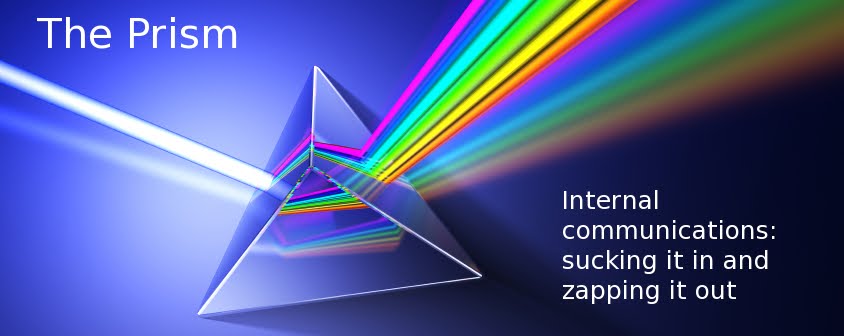I’ve just
written a comms plan for a client and found myself writing in a few hard copy
documents within the deliverables list. Heresy! Surely everything should be
online nowadays? After all, some are saying email is dead so what hope for actual,
real, touchable bits of paper?
It was an
instinctive thought and it made me reflect on why I put them in there, before
the client asked me the same thing. This is what I came up with:
- They are instant – you put them in people’s hands and they’re there. You don’t have to wait until people have a minute to open an email attachment or navigate through an intranet site to get to it.
- You can write on them – put them in someone’s hands while they are listening to the same subject matter and they can take notes as they follow. When they review their notes they’ll make more sense because the context will be there.
- People can take them away to read – useful if they are travelling back from a venue or are overnight in a hotel and not wanting to go online.
- They can provide more detail and/or explanation – useful to build on information they’ve just heard in a presentation, for example.
- They give immediate consistency at multi-site presentations – ever use multi-site cascaded presentations to tailor key messages to particular audiences? Great, and answers that ‘what-does-it-mean-for-me?’ question. But by definition you lose consistency in the key messages (because the presenters will concentrate on the areas in which they and their audience are most interested). A hard copy of the core information given out at the end of the presentation provides that immediate consistency.
- They’re useful if you want to guide the reader through a lengthier story in a particular order (to show the logic behind a big decision, for example). You can put it online but people can get distracted online and start clicking away at other links.
- They are different! I produced a hard copy booklet once for a client where our stakeholders were just fed up with the amount of information that they were being presented with. This was all do with consultation (so required by law) and there was a lot of stuff going through consultation in a short amount of time. Everything was online, very few looked at it because there was so much and it was very dry. The booklet allowed us to join it all together, provide a bigger picture and demonstrate the benefits more clearly. Yes, we could have put it online with a big flashing star but the fact it was in front of them and looked interesting made them read most if not all of it.
Of course
you don’t want to overdo it – that’s annoying to the audience (therefore
self-defeating), can be expensive and is not terribly environmentally friendly.
But on certain occasions, a good old
piece of paper is a vital part of an effective mix of channels.
